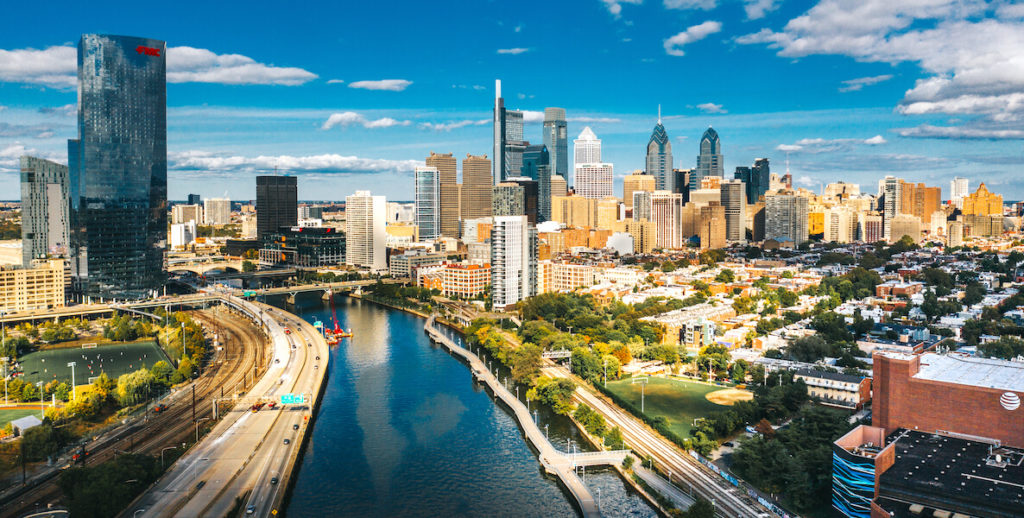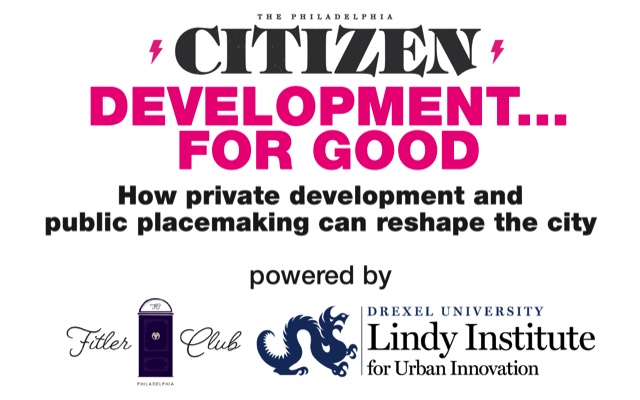The year, I think, was 1988. Dudes were walking around wearing fingerless gloves and Members Only jackets, rocking out to their Sony Walkmans, while their girlfriends sported leg warmers. I was home from college for the first time in a while, and my Dad announced that we were going out to dinner. In Manayunk.
Manayunk? Dad, I said, Manayunk’s an eyesore. It was an industrial wasteland where, in high school, my buddies and I would go to sit on mounds of dirt and drink beer. His eyes widened. “Oh, not anymore,” he said. “There’s this guy, a developer. He turned it into a neat little Main Street town, with restaurants and night life.”
I don’t remember anything else from that night, but I remember Dad’s reference to that guy. He was talking about Dan Neduscin, I’d later learn, someone who had seen the same thing I’d seen in high school but was able to imagine something far different and far more vibrant…and then turn that vision into reality.
Later, it must have been the late nineties, I was a writer at Philadelphia magazine and my editor asked me to talk to this guy who, after reading Richard Florida’s exegesis on the Creative Class, had big plans to turn a brownfield in Northern Liberties into a vibrant cityscape. I did so, and told my editor I’d pass on writing about the guy. “I think he’s full of it,” I said of none other than Bart Blatstein and his vision to build the Piazza, transform Northern Liberties, and set off a series of changes that would soon start to transmogrify Fishtown and Kensington, as well.
For decades, real-estate developers like Neducsin and Blatstein have had an outsized effect on the trajectory of growth in Philadelphia. And now a new generation of visionaries, deal-makers and builders are following suit, driven by the merging of social impact and bottom-line imperatives.
The Citizen will kick off a year-long series — powered by Drexel University’s Lindy Institute for Urban Innovation and Fitler Club, and with partners including the Center City District, Darco Capital, Brandywine Realty Trust, Post Brothers, Shift Capital, JLL and HRP — that examines the intersection of private real estate development and the public good on October 27.

On that night, (pictured above, L–R) Drexel President John Fry, Spark Therapeutics CEO Jeff Marrazzo, Enterprise Center CEO Della Clark and Campus Apartments CEO (and Citizen board member) David Adelman will discuss how the University City economic boom can help grow the region, and the difference that enlightened and intentional real estate development can make in cities.
“If done right, there’s been a longtime symbiotic relationship between private development and the public good,” says Lindy Institute’s Executive Director Harris Steinberg. “When not done right, there are repercussions, trust and equity issues—and those relationships can also turn sour, with the public realm being given away to the highest bidder. But while our history is replete with ignoble attacks on William Penn’s 1682 plan for the City of Philadelphia — can you say waterfront Walmart? — there remains an essential relationship between the design of the public realm and real estate development in Philadelphia today.”
Steinberg has long been a leader in forging that relationship, and we plan to tap into his expertise as we delve into the ways in which private development and public good can converge, touching on issues of gentrification, inequality, diversity, creative placemaking, and the state of labor relations.
We’ll ask critical questions: For whom are amenities created? Who builds wealth? Who decides which projects advance and which fail? And we’ll delve into the classic urban balancing act between economic development and inclusive community revitalization. Finally, we’ll examine the state of our common spaces — from Fairmount Park to the waterfront to the Ben Franklin Parkway — and consider ways to make them even more representative of Penn’s dream for the five public squares making up his “greene Countrie Towne.”
“Well-designed and maintained public spaces,” Steinberg maintains, “create value for the private sector while serving as a backdrop for democratic urban life.”
That’s what we’ll explore, in smart discussions followed by wine and beer-fueled receptions, because, if we’ve learned anything from the rise, fall and rise again of Philadelphia, how a city gets built — and who builds it — is one of the most important questions we can ask of ourselves. Join us on the 27th and stay tuned for the full lineup to come.
MORE ON DEVELOPMENT FOR GOOD IN PHILLY


